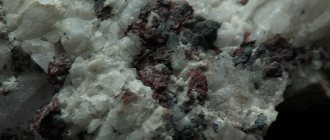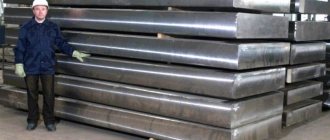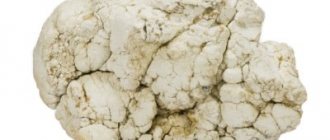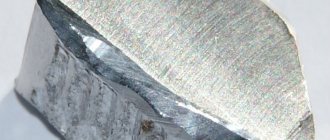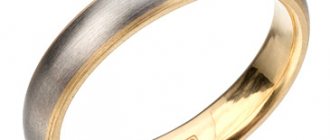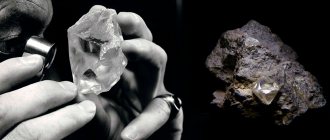In the periodic table, the chemical element titanium is designated as Ti (Titanium) and is located in a secondary subgroup of group IV, in the 4th period under atomic number 22. It is a silvery-white solid metal that is part of a large number of minerals. You can buy titanium on our website.
Titanium was discovered at the end of the 18th century by chemists from England and Germany, William Gregor and Martin Klaproth, independently of each other with a six-year difference. The name of the element was given by Martin Klaproth in honor of the ancient Greek characters of the titans (huge, strong, immortal creatures). As it turned out, the name became prophetic, but it took humanity more than 150 years to become familiar with all the properties of titanium. Only three decades later it was possible to obtain the first sample of titanium metal. At that time, it was practically not used due to its fragility. In 1925, after a series of experiments, using the iodide method, chemists Van Arkel and De Boer extracted pure titanium.
Due to the valuable properties of the metal, engineers and designers immediately paid attention to it. It was a real breakthrough. In 1940, Kroll developed a magnesium-thermal method for obtaining titanium from ore. This method is still relevant today.
Production and manufacturing
Due to its prevalence in nature, mining ore containing titanium is not difficult. The most common types of ore that contain this metal are brookite, ilmenite, anatase and rutile. However, further processing of titanium (melting, hardening and aging) is considered expensive. There are several stages in obtaining pure metal from ore:
- First of all, titanium slag is extracted by heating ilmenite to 1650 degrees.
- Next, the slag goes through a chlorination process.
- After this, titanium sponge is produced using resistance furnaces.
- To obtain pure metal, the final processing step is the refining process.
If you need to obtain titanium ingots, a sponge based on it is melted in a vacuum furnace.
Magnesium-thermal process
Magnesium thermal reduction is a popular method for obtaining metal. Carrying out the technological process:
- The circulating magnesium condensate melts.
- The magnesium chloride condensate is drained.
- At a temperature of 800 degrees, liquid titanium tetrachloride with liquid magnesium is fed into a mold to solidify. Feed rate - 2.1–2.3 g/h cm2.
Gradually the temperature drops to 600 degrees.
Calcium hydride method
This is an industrial method of metal recovery. Work process:
- At a temperature of 500 degrees Celsius, calcium metal is saturated with hydrogen.
- Next, it is mixed with titanium dioxide. The components are heated in a retort, gradually increasing the temperature to 1100 degrees.
- The sintered components are washed out of the retort.
- Next, treatment is carried out with hydrochloric acid.
- Titanium powder is dried and baked in induction ovens at a temperature of about 1400 degrees.
The sintered mass should be subjected to a pressure of 10-3 mm.
Electrolysis method
A method for producing an alloy based on the use of electric current. Voltage affects TiO2, TiCl4. Before this, they are dissolved using molten fluoride salts.
Iodide method
Method for obtaining metal after thermal dissociation of TiJ4. Initially, it is obtained by reacting iodine vapor with titanium metal.
To obtain a high purity alloy, it is necessary to use the latter method of obtaining the compound. The first three methods allow you to quickly obtain technical titanium.
Being in nature
Titanium is in 10th place in terms of prevalence in nature. The content in the earth's crust is 0.57% by weight, in sea water - 0.001 mg/l. In ultramafic rocks 300 g/t, in basic rocks - 9 kg/t, in acidic rocks 2.3 kg/t, in clays and shales 4.5 kg/t. In the earth's crust, titanium is almost always tetravalent and is present only in oxygen compounds. Not found in free form. Under conditions of weathering and precipitation, titanium has a geochemical affinity with Al2O3. It is concentrated in bauxites of the weathering crust and in marine clayey sediments. Titanium is transferred in the form of mechanical fragments of minerals and in the form of colloids. Up to 30% TiO2 by weight accumulates in some clays. Titanium minerals are resistant to weathering and form large concentrations in placers. More than 100 minerals containing titanium are known. The most important of them are: rutile TiO2, ilmenite FeTiO3, titanomagnetite FeTiO3 + Fe3O4, perovskite CaTiO3, titanite (sphene) CaTiSiO5. There are primary titanium ores - ilmenite-titanomagnetite and placer ores - rutile-ilmenite-zircon.
Advantages and disadvantages
Like any other metal, titanium has its strengths and weaknesses. Benefits include:
- light weight;
- corrosion resistance;
- resistance to high temperatures;
- high strength - greater than that of the best steels.
Flaws:
- Dust and chips remaining after processing titanium workpieces can ignite at a temperature of 400 degrees.
- This metal is difficult to weld and is practically impossible to cut.
- The costly method of obtaining metal from ore causes its high cost.
However, despite the existing disadvantages, the material and its alloys are widely used in various industries.
Light weight
Receipt
A block of crystalline titanium (purity 99.995%, weight ≈283 g, length ≈14 cm, diameter ≈25 mm), manufactured using the van Arkel and de Boer iodide method.
Typically, the starting material for the production of titanium and its compounds is titanium dioxide with a relatively small amount of impurities. In particular, it can be a rutile concentrate obtained from the enrichment of titanium ores. However, the reserves of rutile in the world are very limited, and the so-called synthetic rutile or titanium slag, obtained from the processing of ilmenite concentrates, is more often used. To obtain titanium slag, ilmenite concentrate is reduced in an electric arc furnace, while iron is separated into the metal phase (cast iron), and unreduced titanium oxides and impurities form the slag phase. Rich slag is processed using the chloride or sulfuric acid method.
Titanium ore concentrate is subjected to sulfuric acid or pyrometallurgical processing. The product of sulfuric acid treatment is titanium dioxide powder TiO2. Using the pyrometallurgical method, the ore is sintered with coke and treated with chlorine, producing titanium tetrachloride vapor TiCl4:
TiO2 + 2C + 2Cl2 → TiCl4 + 2CO
The resulting TiCl4 vapors are reduced with magnesium at 850 °C:
TiCl4 + 2Mg → 2MgCl2 + Ti
In addition, the so-called FFC Cambridge process, named after its developers Derek Fray, Tom Farthing and George Chen from the University of Cambridge, where it was created, is now beginning to gain popularity. This electrochemical process allows for the direct, continuous reduction of titanium from its oxide in a molten mixture of calcium chloride and quicklime (calcium oxide). This process uses an electrolytic bath filled with a mixture of calcium chloride and lime, with a graphite sacrificial (or neutral) anode and a cathode made of a reducible oxide. When current is passed through the bath, the temperature quickly reaches ~1000–1100 °C, and the calcium oxide melt decomposes at the anode into oxygen and metallic calcium:
2CaO → 2Ca + O2
The resulting oxygen oxidizes the anode (in the case of using graphite), and calcium migrates in the melt to the cathode, where it reduces titanium from its oxide:
O2 + C → CO2 TiO2 + 2Ca → Ti + 2CaO
The resulting calcium oxide again dissociates into oxygen and metallic calcium, and the process is repeated until the cathode is completely converted into a titanium sponge or the calcium oxide is exhausted. In this process, calcium chloride is used as an electrolyte to impart electrical conductivity to the melt and mobility of active calcium and oxygen ions. When using an inert anode (for example, tin dioxide), instead of carbon dioxide, molecular oxygen is released at the anode, which pollutes the environment less, but the process in this case becomes less stable, and, in addition, in some conditions, the decomposition of chloride becomes more energetically favorable, rather than calcium oxide, which leads to the release of molecular chlorine.
The resulting titanium “sponge” is melted down and cleaned. Titanium is refined using the iodide method or electrolysis, separating Ti from TiCl4. To obtain titanium ingots, arc, electron beam or plasma processing is used.
Characteristics and properties
The characteristics of titanium directly depend on the amount of impurities contained in its composition. Physical parameters:
- Specific strength - 450 MPa.
- The melting point of titanium is 1668 degrees.
- Boiling point - 3227 degrees.
- The tensile strength of the alloys is 2000 MPa.
- The elasticity of titanium is 110.25 GPa.
- Metal hardness - 103 HB.
- The yield strength is 380 MPa.
The structure and properties of this metal determine its low electrical conductivity. Under normal conditions, titanium has a high resistance to corrosion processes.
Metal
Physical properties of metal
Titanium is a silvery-white metal. It is refractory, slightly heavier than aluminum. However, with slightly more weight, titanium has three times the strength. Amenable to various processing methods. Resistant to moisture and acids. The main properties of titanium have been described above.
Chemical properties of titanium
Under normal conditions, an oxide film forms on the surface of this metal, which protects it from the destructive effects of moisture and acids. The chemical properties of titanium include its resistance to alkalis and chlorine solutions. Has an oxidation state of +4. It begins to interact with oxygen at a temperature of 600 degrees. Titanium filings may spontaneously ignite when heated.
Tests
The fact that titanium does not have high hardness and cutting properties does not make it possible to use this metal more widely in surgical instruments. Therefore, imparting cutting properties to titanium and increasing its hardness are tasks of paramount importance. The main difficulty here is that modern industrial hardening methods cannot be applied to medical instruments - here they have special requirements. In addition, medical instruments and devices operate under specific conditions (contact with iodine, saline, sterilization by boiling).
Types of alloys
Titanium alloys can be divided into three large groups:
- Compounds based on chemical compounds. Representatives of this group have a heat-resistant structure and low density. A decrease in density directly affects a decrease in the weight of the material. Such alloys are used in the manufacture of parts for cars, frames for aircraft and hulls for ships.
- Heat-resistant alloys with low density. This is an analogue of compounds with nickel, but at a lower price. Depending on the chemical composition, the resistance of the titanium alloy to high temperatures varies.
- Structural - high-strength connections that are easy to process due to their high ductility. These alloys are used to make parts that are installed in equipment that operates under heavy loads.
When producing titanium alloys, official markings are used that indicate what metals it is combined with.
Analogues of the VT1-0 brand
As noted earlier, markings with two letters and a digital designation are purely Russian and are not used in other countries. Therefore, when buying abroad, it is important to know which foreign brands correspond to domestic ones.
- In the United States of America the equivalent is Grade 2
- In Germany - DIN 7034 , DIN 3.7035, DIN Ti2
- In Japan - JIS CI2
- In France - AFNOR T-40
- In England -IMI125
It should be taken into account that these analogues may differ in composition from domestic titanium and are closest to it. Therefore, when purchasing from abroad, it is best to find a company in Russia that has the necessary certificates of conformity for foreign products.
Buyers often wonder whether it is possible to replace domestically produced VT1-0 titanium with one made in China or another country. Answer: yes, you can. In case foreign rolled metal products have certificates of conformity and chemical composition tests. Rolled metal products manufactured abroad can fully replace domestic ones. However, when it comes to such serious industries as defense, then replacement is not practiced here.
Properties and applications of titanium alloys
Titanium alloys do not have the main disadvantages of pure metal. When adding third-party materials, its characteristics change. Key properties of titanium alloys:
- resistance to corrosion processes;
- low density;
- high specific strength.
Alloys are also more resistant to high temperatures. Thanks to increased protection against acids and alkalis, alloys based on this material have gained popularity in the chemical industry and medicine. They are used in construction, production of equipment, cars, airplanes, rockets and ships.
Titanium and compounds based on it are common in various industries. This metal has unique characteristics that set it apart from other materials. Due to the difficulties of obtaining pure metal, its price is quite high.
Surgical instruments
Currently, more than 200 types of various surgical instruments are used in clinical institutions. Their tests were carried out at the Helmholtz Moscow Research Institute of Eye Diseases, the A. Vishnevsky Institute of Surgery, the Zaporozhye Institute for Advanced Medical Studies, and the Ear, Nose and Throat Clinic of the Central Institute for Advanced Medical Studies. All tools received positive reviews from experts. Plate hooks, mirrors and early expanders, that is, tools with a large working area that do not experience heavy workloads, were made with sections reduced by 30%, which in turn reduced the weight of the product by 50%.
Dentistry
In the manufacture of dental plastic prostheses, in order to obtain a cosmetic effect, in domestic dentistry they use a white crystalline substance, which is titanium dioxide. But for dentures, both titanium compounds with oxygen and structural titanium can be used - this is a biologically inert, durable, fairly light and easily processed metal.
Staples
The Clinic of Maxillofacial Surgery under the leadership of Associate Professor K. I. Tatarintsev (Zaporozhye) proposed a new method for treating mandibular fractures using U-shaped titanium staples BT1−00. The expanding legs of these brackets ensure reliable fastening of all jaw fragments in the correct position. Between 1971 and 1973, this method cured about fifty patients with unilateral and bilateral fractures of the lower jaw. The results obtained prove that the new technology shortens the wound healing time, thereby returning the patient to work much faster.
Treatment
At the All-Union Scientific Research Institute of Surgical Equipment and Instruments, in order to increase metal hardness, wear resistance and reduce the coefficient of friction, chemical-thermal and thermal treatment (that is, alfa-plating and nitriding) was carried out. Using anodization, a colored film of different shades was obtained on the products (lilac, green, violet, gold). All samples were sterilized through an autoclave at 180 °C. After each cycle, the change in color of the coating and the appearance of corrosion spots were studied. The most durable and corrosion-resistant film was the oxide film of golden, lilac and violet colors.
Provider
Are you interested in the use of titanium in medicine? The use of titanium in medicine from the supplier “Auremo” complies with GOST and international quality standards, the price is optimal from the supplier. We offer to buy products from specialized warehouses with delivery to any city. Buy today. For wholesale customers the price is preferential.
Buy, favorable price
The use of titanium in medicine from the supplier "Auremo" is offered today at the best price. We have the widest selection of products in stock. Titanium is always available, the price is determined by the technological features of production without including additional costs. Optimal price from the supplier. Buy today. We are waiting for your orders. We have the best price-quality ratio for the entire range of products. Experienced managers are in touch and will quickly help you buy titanium in bulk or in installments. Regular customers can buy rolled titanium at a discount.
Sets
Titanium medical instruments are 20-30% lighter than steel products, but they are more convenient and durable, and also have better corrosion resistance. Based on the information obtained, employees of the All-Union Research Institute developed and manufactured experimental sets of instruments made of titanium alloys for dentistry, otorhinolaryngology and general surgery. The set for general surgery included hemostatic clamps, plate tweezers and double-sided hooks, a V-shaped wire hook, a scalpel with removable blades, hepatic speculum and other products - a total of 27 items (the weight of all instruments is 1.59 kilograms). The ENT kit for otorhinolaryngological operations included a tracheotomy dilator with a spring, a Lyra dilator, ear tweezers, a tracheotomy hook, ear specula and tampon forceps (total weight - 235 grams). The set of dental instruments has passed all tests at the Central Research Institute of Dentistry.
Orthopedics
Currently, bone fractures are often treated with metal osteosynthesis. For it, rods are used, which ensure the immobility of the fragments, facilitating the process of consolidation of the fracture. But many patients subsequently experience various complications associated with the use of stainless steel structures. Heterogeneity of steel, both chemical and structural, often causes the destruction of fasteners, and this leads to fractures of the entire structure. Bone tissue is damaged by corrosion products, and phenomena of electrical conductivity and ionization are observed. Iron ions begin to interact with physiological salts of the body, which causes inflammation and acute pain. Therefore, even the highest quality stainless steel is not the best material for osteosynthesis.
Bone anchors
The use of titanium for the manufacture of bone fixators made it possible to avoid the complications described above due to the biological neutrality of this metal. Thus, titanium structures can be used for long-term (or even permanent) stay in the human body. This is especially important if osteosynthesis is performed on elderly people, because the use of titanium can save the patient from surgery to remove the fixator.
